Exploring the Birthstone for December 16th: Significance and Care
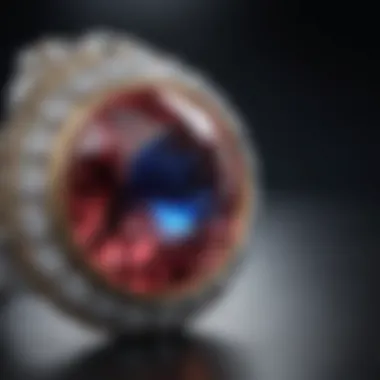
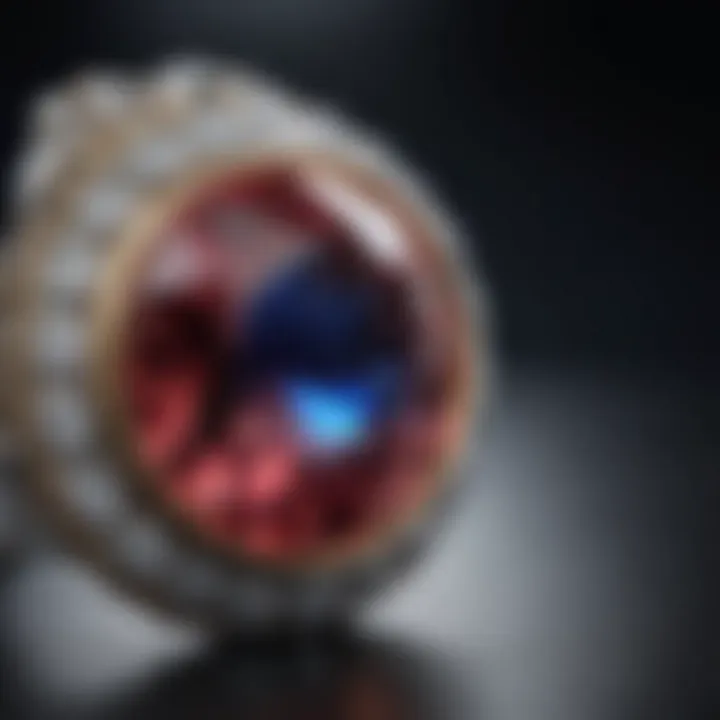
Intro
The world of gemstones is a tapestry of stories, cultures, and meanings that evolve over millennia. Each stone carries a unique significance tied to the month of one's birth, and for those born on December 16th, this connection is particularly noteworthy. As we delve into the birthstone associated with this date, we will uncover its distinctive characteristics, historical background, and the role it plays today in the lives of individuals. Through this exploration, enthusiasts, collectors, and jewelry designers will gain insights that enrich their appreciation for this captivating gem.
Gemstone Overview
Definition and Characteristics
The birthstone designated for December is tanzanite, a fascinating gemstone that boasts a mesmerizing connection to both beauty and rarity. Found only in Tanzania, tanzanite is acclaimed for its striking blue to violet hues, often exhibiting pleochroism, the ability to display different colors when viewed from various angles. This quality makes tanzanite a sought-after gem, captivating both gem enthusiasts and jewelry designers alike.
In its natural state, tanzanite can wear a range of colors, from deep blues to purples, which can sometimes appear more vivid if viewed under different lighting conditions. It is primarily formed from a mineral called zoisite, which adds complexity to its appeal. The gemstone's unique properties make it a popular choice for alignment with the spirit of those born in December.
Classification of Gemstones
Gemstones can be classified into a few distinct categories based on their overall properties, origins, and composition. Generally, they fall into precious stones (like diamonds, rubies, sapphires, and emeralds) and semi-precious stones — tanzanite being classified as a semi-precious gemstone.
Here’s a quick breakdown of some classification criteria:
- Organic vs. Inorganic: Some gemstones, like pearls and amber, come from living organisms, while most others, like tanzanite, are formed from mineral compositions.
- Hardness: This refers to the ability to withstand scratches. Tanzanite ranks around 6 to 7 on the Mohs scale.
- Color: Ranging from deep blues to vivid purples, the color classification of tanzanite can significantly affect its market value.
Historical Significance
Ancient Uses and Cultural Importance
Tanzanite is a modern gem, first discovered in 1967. Despite its relatively recent inception, ancient cultures have attributed various meanings and uses to other gemstones associated with the December birthdate. Historically, many believed that stones closest to the heart of the earth possessed healing properties and could affect moods and destinies. Tanzanite, in its regal blue employs similar folklore, thought to enhance spiritual awareness as well as compassion and understanding.
Myths and Legends Surrounding Gemstones
Many myths surround gemstones, and tanzanite is no exception. Some tales suggest that wearing tanzanite offers protection during journeys and impacts communication. In modern mythology, it is often said that those who adorn themselves with this stone are granted a clearer vision of their true self, unlocking hidden potential emotionally and spiritually.
"Through culture and myth, gems become a living art, expressing not just beauty, but also the very essence of human experience."
By examining the historical contexts, we can see how these stones inform many aspects of life, from celebrations to personal milestones.
As the narrative unfolds, one can anticipate more precise explorations into how tanzanite affects the individuals with December birthdays. Expect insights into care practices, how to identify genuine pieces, and tips for incorporating tanzanite into personal jewelry collections.
Prelims to December Birthstones
The concept of birthstones, particularly for the month of December, is deeply interwoven with both cultural and personal significance. For those born on December 16th, understanding this topic is not just about knowing the gem's name but delving into its facets and meanings. This article seeks to illuminate the intricate tapestry that birthstones weave into our lives, particularly how they resonate with those whose special day falls in December.
In general, birthstones are not merely decorative gems; they are laden with historical stories, astrological beliefs, and cultural connotations. Each stone is said to embody certain traits, making it significant to the individual born in that month. For December, the birthstones include tanzanite, turquoise, and zircon—each carrying its unique history and charm.
Overview of Birthstones
Birthstones have ancient origins, tracing back to biblical times. It is thought that the twelve stones described in the Book of Exodus have evolved into modern birthstone meanings. Each stone symbolizes various virtues and was believed to offer protection or bring good fortune to the wearer.
- Tanzanite: A relatively new addition, discovered in the 1960s, this vibrant blue-violet stone stands out for its unique hue and the legend that surrounds its formation.
- Turquoise: With a history that spans cultures from the Egyptians to Native Americans, turquoise is often associated with healing and tranquility.
- Zircon: Often misunderstood due to its name being similar to "cubic zirconia" (a synthetic stone), natural zircon is prized for its brilliance and rarity.
Significance of Birthstones in Culture
Culturally, the importance of birthstones varies greatly. In some traditions, wearing one’s birthstone is believed to bring about positive energies and spiritual growth. The birthstones of December are no exception. They symbolize different aspects of life and personality, which can have profound implications on self-identity.
- Connection to Identity: Wearing a personal birthstone serves as a reminder of one’s heritage and personal journey.
- Cultural Celebrations: Many cultures incorporate birthstones into rituals or celebratory practices, often presenting them as gifts during significant life milestones - think birthdays, anniversaries, or even graduations.
It's crucial to recognize that the appeal of birthstones lies not only in their beauty but also in the stories they hold. For individuals born on December 16th, knowing about the birthstone can forge a deeper connection to personal identity and cultural roots.
"A birthstone is more than just a gem; it’s a narrative that continues to unfold with each generation."
Embracing the ethos around birthstones allows for personal exploration, making it a fitting topic for anyone looking to uncover deeper meanings or connections in their life.
The Birthstone for December


When we think about the month of December, a sense of magic often surrounds it. This is the time of year when the world seems to transform with vibrant lights and celebrations. At the heart of this transformation is the December birthstone—an essential element that brings significance and character to the individuals born during this month.
The birthstone for December, in all its forms, offers more than just aesthetic beauty. Each gem has its own set of qualities that carry meanings, beliefs, and traditions. From profound spiritual attributes to cultural associations, the three main stones—Tanzanite, Turquoise, and Zircon—each tell a story that resonates deeply with those born on December 16th.
These stones not only reflect the season but also hold various benefits and considerations worth exploring. Choosing a birthstone means embracing a piece of lore and history, a tangible connection to one's identity or heritage. In this article, we will observe how these gems benefit individuals and society alike, recognizing their roles in enhancing well-being, symbolizing love and fidelity, and even serving as financial investments in modern jewelry.
Tanzanite as the Primary Birthstone
Tanzanite deserves the crown as the primary birthstone for December. Discovered relatively recently—the late 1960s in Tanzania—Tanzanite has captured the hearts of many with its striking blue and violet hues. The exceptional color of this gemstone can change depending on the light, making it a fascinating choice for collectors and enthusiasts alike.
This stone is not just visually appealing; it also symbolizes transformation and spiritual growth. Many believe Tanzanite encourages a deeper understanding of oneself, fostering insight and awareness. This makes it a fitting gem for those born on December 16th, as they often seek knowledge and clarity in life. Whether set in a ring, pendant, or bracelet, Tanzanite has become a beloved choice in modern jewelry, providing both elegance and emotional reinforcement.
Turquoise: A Secondary Choice
Next up is Turquoise, a stone that has roots stretching back into ancient cultures. Known for its vibrant blue and green tones, Turquoise has adorned the jewelry of kings and shamans alike. In many Native American cultures, this stone is revered as a powerful protective talisman.
People often associate Turquoise with healing and balance, qualities that those born in December may particularly resonate with. Its calming nature supports emotional stability and well-being, making it a pragmatic choice for jewelry that one might wear daily. Plus, Turquoise can add an element of nostalgia, recalling the social customs and practices of bygone eras. It seamlessly fits into both traditional and contemporary designs, serving as an expressive medium.
Zircon: The Lesser-Known December Gemstone
Finally, Zircon, often overshadowed by more famous gems, is the underdog of December's birthstones. Available in an impressive palette of colors, Zircon is sometimes confused with cubic zirconia; however, they are worlds apart in terms of mineral composition and value.
Zircon holds historical importance, rumored to have been used for centuries as a protective stone. It promotes strength and individuality, drawing on its ancient roots while offering modern versatility. Those who wear Zircon are often said to be blessed with prosperity and wealth—rightly so, considering Zircon's unique brilliance and fire that often captures light beautifully. Though not as widely known, Zircon’s diverse applications from elegant earrings to decorative brooches make it a true gem worth considering for anyone born in December.
Characteristics of December Birthstones
When discussing the birthstones associated with December, it's essential to comprehend the subtleties that define each gem. Distinguishing features, both physical and metaphysical, influence not just how these stones are appreciated but also how they relate to those born in this month. Grasping the characteristics of December birthstones can provide deeper insights into their desirability and value in various contexts, be it for jewelry or as collectibles. The uniqueness of each stone can lead to a greater appreciation among gemstone enthusiasts and collectors alike.
Physical Properties of Tanzanite
Tanzanite stands out with its vivid blue and violet hues, making it a spectacular choice for jewelers and buyers. This gemstone is essentially a variety of the mineral zoisite, its color rooted in the presence of vanadium. It's primarily found in a limited region of Tanzania, from which it derives its name. The stone exhibits a striking phenomenon called pleochroism, which means that it can display different colors when viewed from different angles.
From a hardness perspective, tanzanite measures around 6 to 7 on the Mohs scale. While not the hardest stone on the block, it’s still durable enough for daily wear, provided it is taken care of properly. With its stunning appearance and moderate toughness, many people gravitate towards tanzanite as a central piece in their jewelry collection.
Identifying Turquoise
Turquoise is another gem that catches the eye, characterized by its unique blue-green color. The identification of turquoise can sometimes be tricky due to the varying shades and the presence of matrix patterns within the stone. It typically forms in arid environments, where copper-rich minerals mix with the elements, giving it that distinctive hue. Unlike tanzanite, turquoise is a softer stone, averaging between 5 to 6 on the Mohs scale.
When examining turquoise, one might notice its waxy luster and opaque appearance. Other identification tips include looking for its fine veins or matrix, often in brown or black. Such natural markings can enhance its beauty and uniqueness, making each stone stand apart. Collectors often appreciate these variations, which can tell a story about the conditions under which each piece was formed.
Understanding Zircon's Variations
Zircon might not be as glamorous as tanzanite or turquoise, but its historical and practical significance cannot be overlooked. Often confused with cubic zirconia due to its naming, zircon exists in a natural state and comes in an array of colors, including blue, green, yellow, and even colorless. This gem shines brightly with a high refractive index, similar to diamond, which contributes to its incredible sparkle.
Zircon’s composition is chiefly in the form of zirconium silicate, and it can be found in various deposits worldwide. The gem can range from 6 to 7.5 on the Mohs scale, giving it a decent level of durability. It's also worth noting that zircon can occur in different variations depending on factors like heat treatment, resulting in changes in color and clarity. Understanding these nuances not only helps in appreciating zircon but also aids in recognizing its worth and rarity in the gemstone market.
"The beauty and character of December birthstones lie not just in their appearance, but also in the intricate tales of their formation and the values they hold across various cultures."
By deeply grasping the characteristics of these unique stones, enthusiasts can make informed decisions when purchasing them, and thus appreciate the broader context in which these gems exist.
Symbolism and Meaning
The exploration of symbolism and meaning related to December's birthstones is of great consequence. Each gemstone isn’t just a pretty piece of nature; it carries stories, intentions, and unique attributes that resonate deeply with those born in this month. Tanzanite, Turquoise, and Zircon each have their own spiritual significance and cultural narratives that can influence not only personal identity but also decision-making and relationships. Understanding these gems brings both clarity and connection, creating a richer appreciation of one’s birthstone beyond its mere aesthetic appeal.
Tanzanite's Spiritual Attributes
Tanzanite, recognized for its striking blue-violet hue, is often associated with transformation and spiritual growth. Those who embrace the properties of tanzanite may find themselves drawn to its calming energies, rumored to facilitate meditation and introspection. This gemstone is seen as a bridge between the physical and spiritual worlds.
Some specific attributes include:
- Enhancing intuition: This stone is said to sharpen mental clarity and psychic abilities, helping individuals access their inner wisdom.
- Encouraging communication: The vibrant color symbolizes communication and expression, making it an ally for those seeking to voice their thoughts and feelings more effectively.
- Promoting harmony: Wearing tanzanite can help foster peace and understanding within relationships, encouraging compassion and empathy.
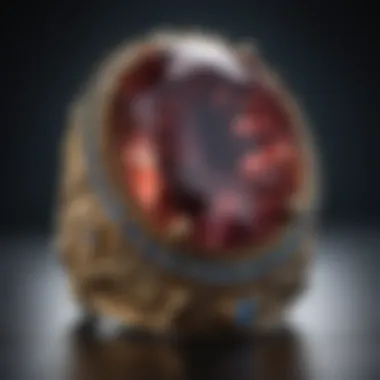
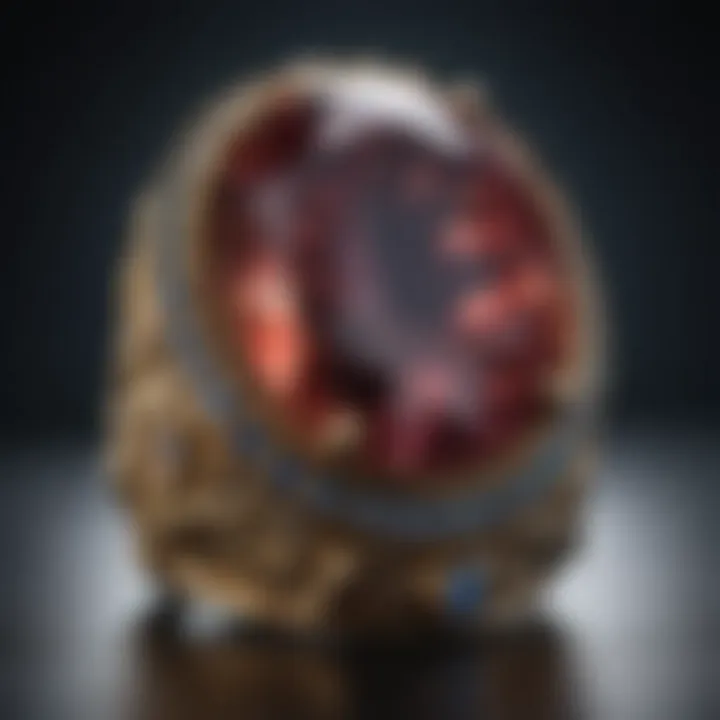
In essence, tanzanite carries a weight of spiritual significance, suggesting that its bearers can navigate their world's complexities with a clearer perspective.
Cultural Significance of Turquoise
Turquoise has been cherished across civilizations, often regarded as a symbol of protection and healing. Tribes such as the Navajo and various ancient cultures valued this stone for its reputed ability to safeguard wearers on their journeys and provide overall health benefits. Its distinct blue and green colors evoke images of calm waters and clear skies, opening up a narrative rich in history.
Highlighting its cultural significance:
- Symbol of protection: Turquoise was believed to ward off negative energies and ensure safety, particularly in turbulent times.
- Healing properties: Many cultures have regarded it as a stone of healing, making it a popular talisman among healers and travelers alike.
- Connection to tradition: Craftsmanship involving turquoise, especially in Native American jewelry, tells a unique story of community and skill passed from generation to generation.
Thus, turquoise is not just a beautiful gem but also one heavily intertwined with cultural traditions and beliefs, making it a meaningful choice for individuals.
Zircon and Its Historical Value
Zircon, often overshadowed by other stones, possesses a rich tapestry of historical significance. It was frequently mistaken for diamond in the past due to its brilliance and fire. Beyond its value in jewelry, zircon has often been seen as a stone of wisdom and prosperity.
Noteworthy aspects of zircon’s history include:
- Ancient allure: Used across various ancient civilizations, zircon was believed to attract wealth and success, while also symbolizing purity and integrity.
- Diverse colors: Zircon comes in a plethora of dazzling colors, each reflecting different meanings; for instance, blue zircon is often linked with tranquility, while red is associated with passion and courage.
- Gemstone of choice: Due to its brilliance, zircon has been favored in engagement rings and other significant jewelry pieces over centuries, highlighting its timeless nature and enduring value.
Usage in Jewelry
The incorporation of December birthstones in jewelry not only adds aesthetic value but also carries deep symbolic significance. For individuals born in December, wearing their birthstone can be a source of pride and connection to their identity. Each gemstone embodies unique qualities, often thought to influence the wearer's life in meaningful ways.
Tanzanite in Modern Jewelry
Tanzanite, with its striking blue and violet hues, is a star in modern jewelry design. Its rarity and exquisite color make it a coveted choice among designers. Many jewelers craft pieces that showcase its brilliance, combining it with white gold or platinum for a contemporary touch.
The stone's ability to shift shades under different lighting is a particular favorite feature, capturing the attention of both wearers and admirers alike. Engagement rings, pendants, and earrings set with tanzanite often stand out in a crowd, symbolizing not only the month of December but also loyalty and love.
"Tanzanite is a game changer in the world of gemstones— it just draws you in."
Turquoise in Traditional and Contemporary Designs
Turquoise boasts a rich history in jewelry, often linked to various cultures from Native American to Persian influences. Its vibrant blue-green shades have made it a staple in both traditional and contemporary designs. For many, this stone represents wisdom and protection.
In modern settings, turquoise is oftentimes paired with silver or other metals, creating a striking contrast that highlights its natural beauty. Whether crafted into intricate necklaces or chunky statement rings, turquoise continues to be a favorite for those who appreciate both its history and visual appeal. Decorated with beautiful patterns, it allows for a creative expression that resonates across generations.
Zircon's Diverse Applications
Zircon, while perhaps lesser-known compared to its counterparts, is remarkably versatile in the jewelry realm. Its brilliance and array of colors—from clear to rich blues—provide numerous options for designers. Often used as a cost-effective alternative to diamonds, zircon’s sparkle can easily catch the eye.
Jewelry pieces featuring zircon can range from chic everyday wear to luxurious evening pieces. Its significance as a gemstone tied to knowledge and wisdom makes it appealing to a broad audience. This adaptability ensures that zircon maintains a vital role in both classic and modern jewelry styles.
In summary, these unique usages within jewelry not only celebrate the aesthetic aspects of the December birthstones but also honor their profound meanings, making them timeless choices in the ever-evolving landscape of adornment.
Caring for December Birthstones
Taking care of your December birthstones is not just about keeping them shiny; it's akin to nurturing a delicate friendship. Each gem, from the stunning Tanzanite to the vibrant Turquoise and the charming Zircon, has its own quirks and needs. Understanding how to properly care for these gems not only preserves their natural beauty but also enhances their longevity, allowing them to tell their stories for years to come.
Cleaning and Maintenance for Tanzanite
Tanzanite is a gem that boasts a unique blue-violet hue, but it can be a bit sensitive. This gemstone ranks around 6 to 7 on the Mohs scale, which makes it relatively softer than other stones. The key to maintaining its luster is to clean it gently. Here are some simple pointers for cleaning:
- Use a soft cloth dampened with warm, soapy water.
- Avoid harsh chemicals or ultrasonic cleaners; these can cause damage.
- Rinse it well with clean, lukewarm water and dry it with a soft cloth.
Storing Tanzanite is also vital. Keep it away from harder stones and metals to avoid scratches. A fabric-lined box or a soft pouch can be helpful to keep it safe when not worn. Regular care, much like attending to a plant, helps Tanzanite flourish beautifully.
Best Practices for Turquoise
Turquoise is a stone steeped in culture and history, yet it requires special attention and care. This stone is porous and can absorb oils and chemicals, making it critical to handle it with care. To preserve its beauty:

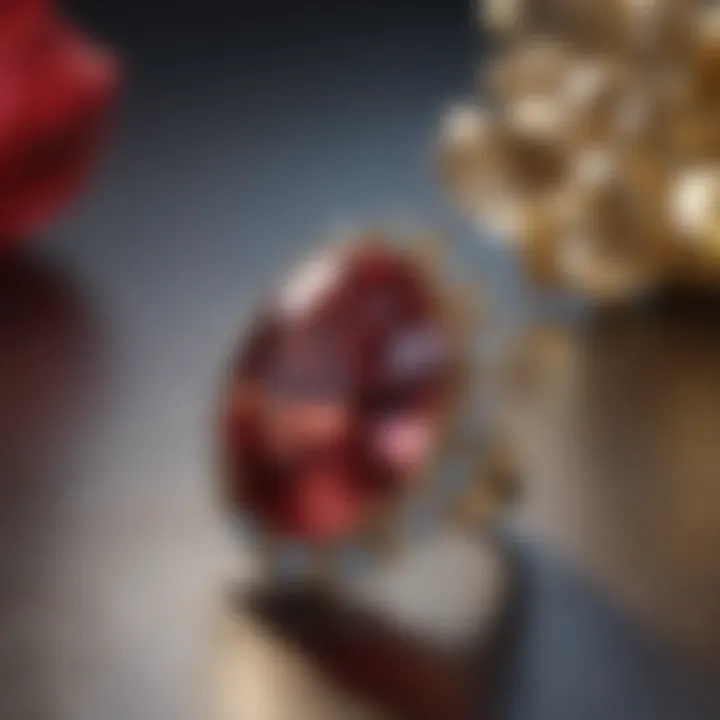
- Gently wipe it with a slightly damp cloth after wearing. This helps remove sweat or oils from your skin.
- If more cleaning is needed, mild soap and water can work wonders, but always remember to dry it immediately.
- Avoid exposing turquoise to high heat or harsh chemicals, as it can fade in color or lose its sheen.
For safekeeping, try not to store it with other gems that may scratch its surface. A soft pouch lined with a cloth will keep it cozy and protected.
Preserving Zircon's Luster
Zircon, known for its brilliance and fire, is quite durable but still requires thoughtful care to maintain its sparkle. It’s about balancing vibrancy with consideration:
- Clean your Zircon with warm, soapy water using a soft brush, especially in the crevices where dirt can accumulate.
- Rinse it under a warm tap and ensure it's completely dried with a soft cloth afterwards. This prevents water stains that can dull its luster.
- Store Zircon separately to avoid scratches, as mixing it with harder gemstones can lead to unwanted abrasions.
In fact, keeping your Zircon away from direct sunlight and extreme conditions can help retain its brilliance. Like a well-loved book, with proper care, Zircon will continue to shine brightly in your collection.
"Investing time in the care of your gemstones can transform them into cherished heirlooms."
Understanding how to maintain the beauty and integrity of December birthstones is an evolving journey. Evidence suggests that regular care can significantly enhance the enjoyment you derive from these magnificent gems, making them truly timeless treasures.
Market Trends and Value
Understanding the market trends and value of December's birthstones is crucial for anyone interested in gemstones, particularly for collectors and investors. The worth of a gemstone can fluctuate based on various factors such as scarcity, quality, and buyer demand. This section explores the current landscape of the markets for Tanzanite, Turquoise, and Zircon, shedding light on their unique positions and potential for future investment.
Current Value of Tanzanite
Tanzanite, traditionally the most recognized birthstone for December, commands a varied price range that reflects its popularity and the intricate factors surrounding its mining. Prices for high-quality Tanzanite can reach significant heights, often resulting in costs that can start from $500 per carat for smaller pieces and soar above $1,200 for larger, exquisite stones. Factors influencing its value include color depth, clarity, and carat weight.
The unique pleochroism exhibited by Tanzanite—showing different colors when viewed from different angles—adds to its allure and marketability. Collectors regard deep blue to violet hues as the most desirable, contributing to a competitive marketplace.
However, it's important to be aware of trends like over-saturation or market fluctuations owing to supply issues. Mining activity has diminished in Tanzania, the stone's only source, making this gem both limited and increasingly sought-after.
Turquoise Market Insights
Turquoise holds a storied place not only in jewelry but also in cultural significance across various civilizations. In recent years, the turquoise market has seen a revival in interest, especially due to its incorporation into modern designs and fashion statements. Prices can vary significantly, but high-quality pieces can fetch anywhere from $50 to $500 per carat, depending on the origin and quality of the stone.
Several sources contribute to the turquoise market: the United States, particularly from Arizona, and mines in Iran are well-regarded. The mineral's hues range from sky blue to green, and the presence of matrix patterns can enhance or detract from its appeal and value. As more jewelers embrace turquoise, it’s likely we’ll see shifts in pricing as demand continues to grow.
Regulations on sourcing and conservation efforts will also play a role in shaping this market. Buyers should be mindful of ethical implications when purchasing, ensuring they are supporting sustainable practices.
The Role of Zircon in Gem Investment
Zircon, often overlooked in the birthstone conversation, has been steadily gaining traction in the investment community for its incredible diversity and historical significance. This gemstone is available in numerous colors, with blue zircons often likened to sapphire due to their brilliant hues.
In terms of value, zircon can vary widely, typically ranging from $25 to $500 per carat. However, fine quality stones with vibrant colors are becoming more difficult to find, which may drive prices higher. Investors might consider zircon not just as a gorgeous decorative piece but also as a long-term investment opportunity.
The increasing interest in sustainable and ethically sourced gemstones bodes well for zircon, especially considering its lesser-known presence in the market. Collectors who understand its worth could benefit from the rising demand as more people become aware of this remarkable gemstone.
"Zircon's history dates back to centuries and, despite its comparative obscurity, is carving a niche for itself in today's investment scene."
In summary, the market dynamics surrounding December’s birthstones are constantly evolving. By understanding the current values and market insights, both gem enthusiasts and potential investors can make informed decisions in this intricate world of gemstones.
End
The discussion surrounding the birthstone for December 16th opens up a treasure trove of historical, cultural, and personal significance tied intricately to these gems. Each of the three stones—tanzanite, turquoise, and zircon—carries its own essence and story that resonates with those born in this month.
Recap of Key Insights
In summarizing the key points:
- Tanzanite is noted not just for its striking hues but also for its rarity, making it a symbol of transformation and spiritual insight.
- Turquoise has deep-seated historical ties, cherished by various cultures over centuries, offering not only beauty but also believed protective qualities.
- Zircon, often misunderstood for its similarity to cubic zirconia, boasts a range of colors and a rich history linked to both adornment and investment.
These gems are not merely ornaments; they embody stories and meanings that transcend time and geography.
The Timeless Nature of December Birthstones
The enduring allure of December birthstones lies in their unique attributes and significance. Each stone holds the potential to connect individuals to their personal and collective histories. In a world where trends come and go, these gemstones retain their value both materially and sentimentally.
Additionally, the emotional weight they carry—whether it's through cherished family heirlooms or personal milestones—positions them as timeless keepsakes.
"Gems are the reminders of our journeys, anchors to what we hold dear, transcending generations and memories."
This essence of timelessness, paired with their physical beauty, ensures December birthstones remain a popular choice for gifts and jewelry, creating a bridge between generations.







